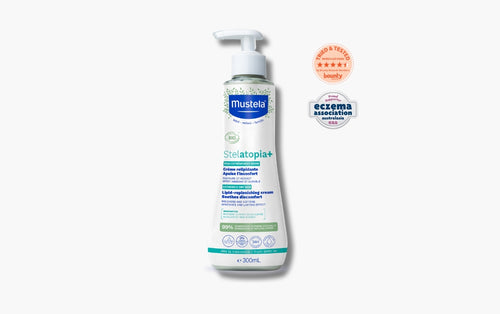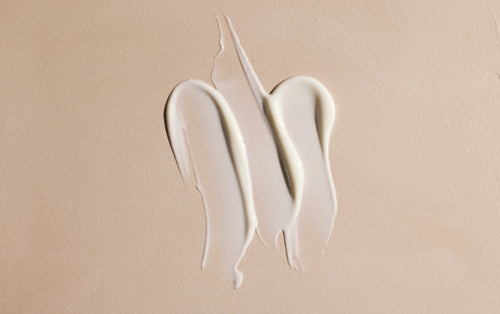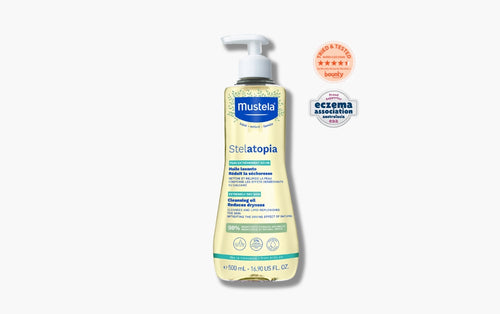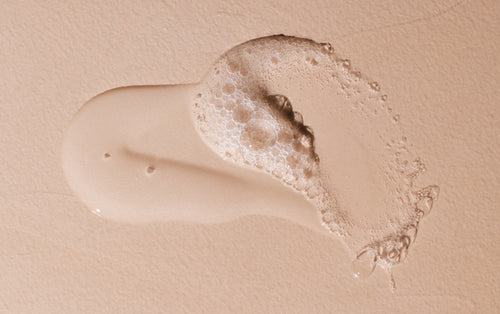Why do breasts grow in pregnant women?
-
Hormones rise in the very first weeks
From the very start of pregnancy, the influx of hormones causes the ducts and mammary glands to increase in volume to prepare them for breastfeeding. Consequently, your chest grows, its bluish vein network tends to show more, the colour of your nipples may also darken, and sometimes, painful feelings of tension appear. And when it comes to breast tension, we're not relatively equal: depending on the level of hormones, the size increases and feelings of discomfort vary a great deal from one pregnant woman to another. Some can't stand being touched on their breasts, others may find it uncomfortable to run after a bus, while others take great pleasure in this unusual volume.
-
Breasts reach maximum volume with milk flow
This increase in volume will reach its maximum a few days after childbirth when the milk flows in. If you're not breastfeeding, the sudden drop in hormones will cause your breasts to decrease rapidly. If you breastfeed, the process will be more gradual. Either way, the sooner you care for your breasts properly, the better you'll maintain their firmness.
Your best ally during pregnancy: a suitable bra
As soon as you start to feel uncomfortable, your best investment as a pregnant woman will be new bras. At the end of pregnancy, each breast takes on an additional 500 grams, on average - the equivalent of two cup sizes. It's important to wear underwear that fits your new curves. Here's our advice: measure yourself every trimester, and choose bras with more bottomless cups and wide straps that hold your breasts properly without compressing them. If it helps, you can even wear your bra at night. And don't worry about taking on a grandma look; today's maternity underwear can be just as pretty as the most excellent classical lingerie. And if you're a "no bra" fan (no bra daily), go directly to the next step: hydration.
What skincare products should you choose?
-
Products that are specifically suited for pregnancy and breastfeeding
Because they have no muscles, breasts' firmness depends mainly on skin tone. The sudden increase in volume strains their skin elasticity and can become uncomfortable or even painful. Applying cool water compresses can relieve tension significantly but won't have much impact on sagging skin. The solution is to take care of your breasts daily with specific products that stimulate the production of skin support fibres that hydrate deeply and soothe the ultra-responsiveness of your epidermis. If needed, remember to choose formulas suitable for maternity and compatible with breastfeeding.
-
A breast-care routine
If your breasts feel tense or even painful, a massage can help relieve you. How? Massage delicately around your breasts, from the inside out, working up to the neck. Try combining this routine with anti-stretch mark products. Hormonal changes and sudden skin distension also favour stretch marks.
The right position
-
Straighten up to avoid tension
Increasing breasts are subject to gravity… which causes you to bend your chest forward slightly. And this position won't help tone your pectorals! It can even hurt your back in the long run... Here's how to feel better: take a deep breath and stand up to avoid neck and upper back muscle tension. The idea is not to stiffen until you can't breathe properly but to grow taller by pushing the top of your head upwards without lifting your chin.
-
Breast gym
Try a little breast gym after your skincare routine to tone your pectoral muscles that help support your breasts. Just a few minutes will be enough. Bring your hands together, elbows at shoulder height, squeeze your palms together while you inhale, hold for three seconds, release while exhaling - repeat fifteen times!
Your breasts - whether they look like Jane Birkin's or Kim Kardashian's – will surely be grateful for these tips!


















